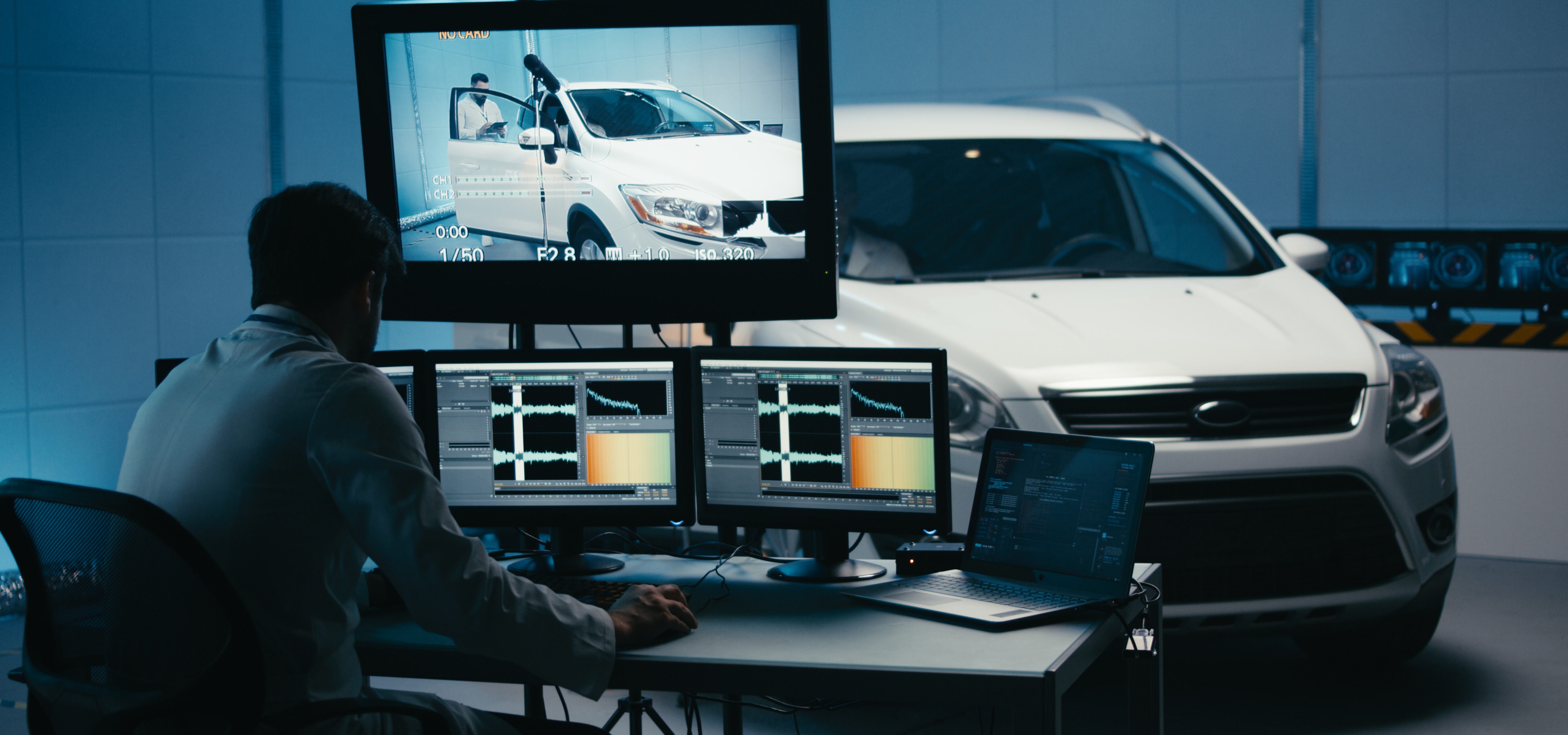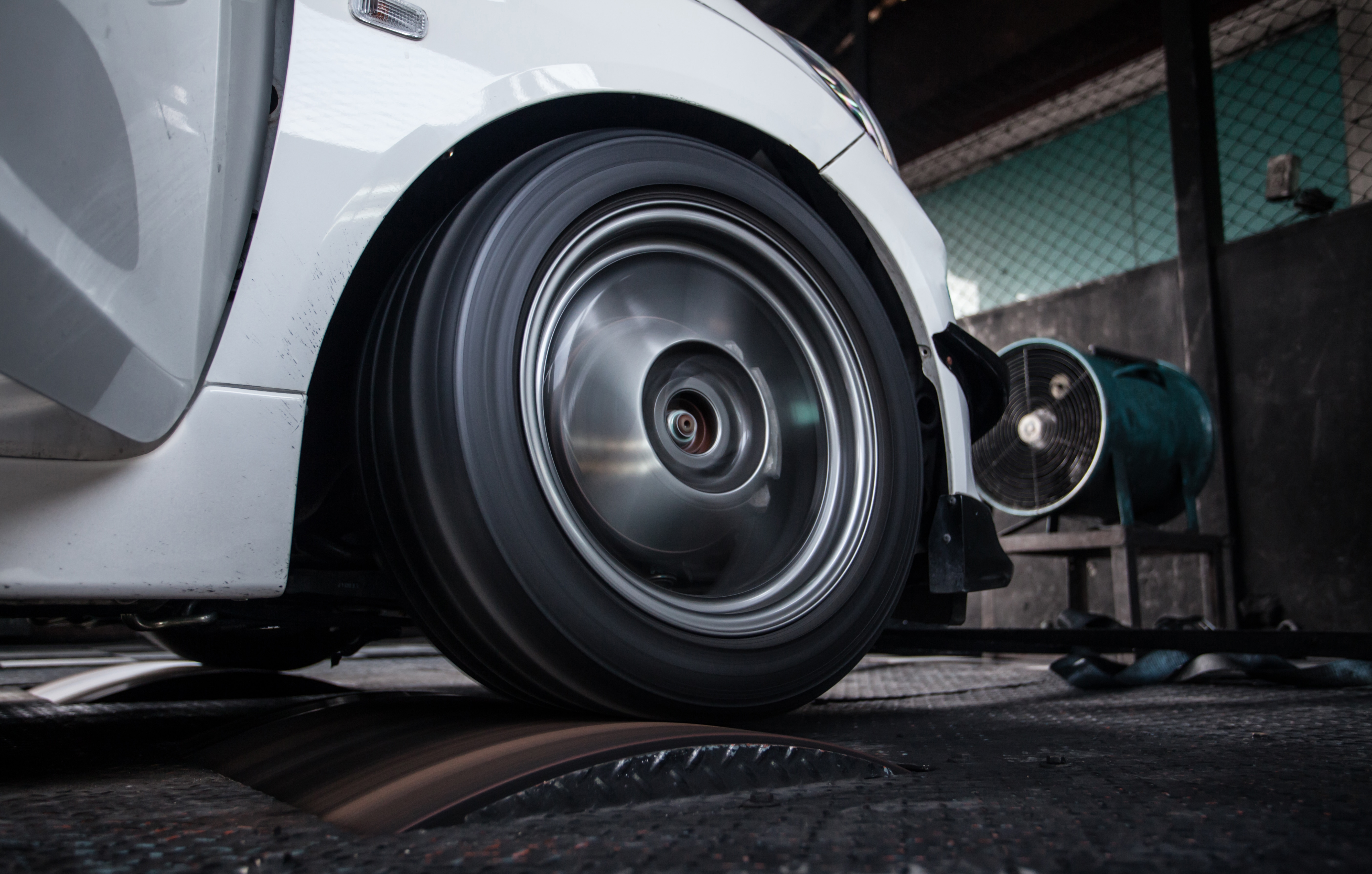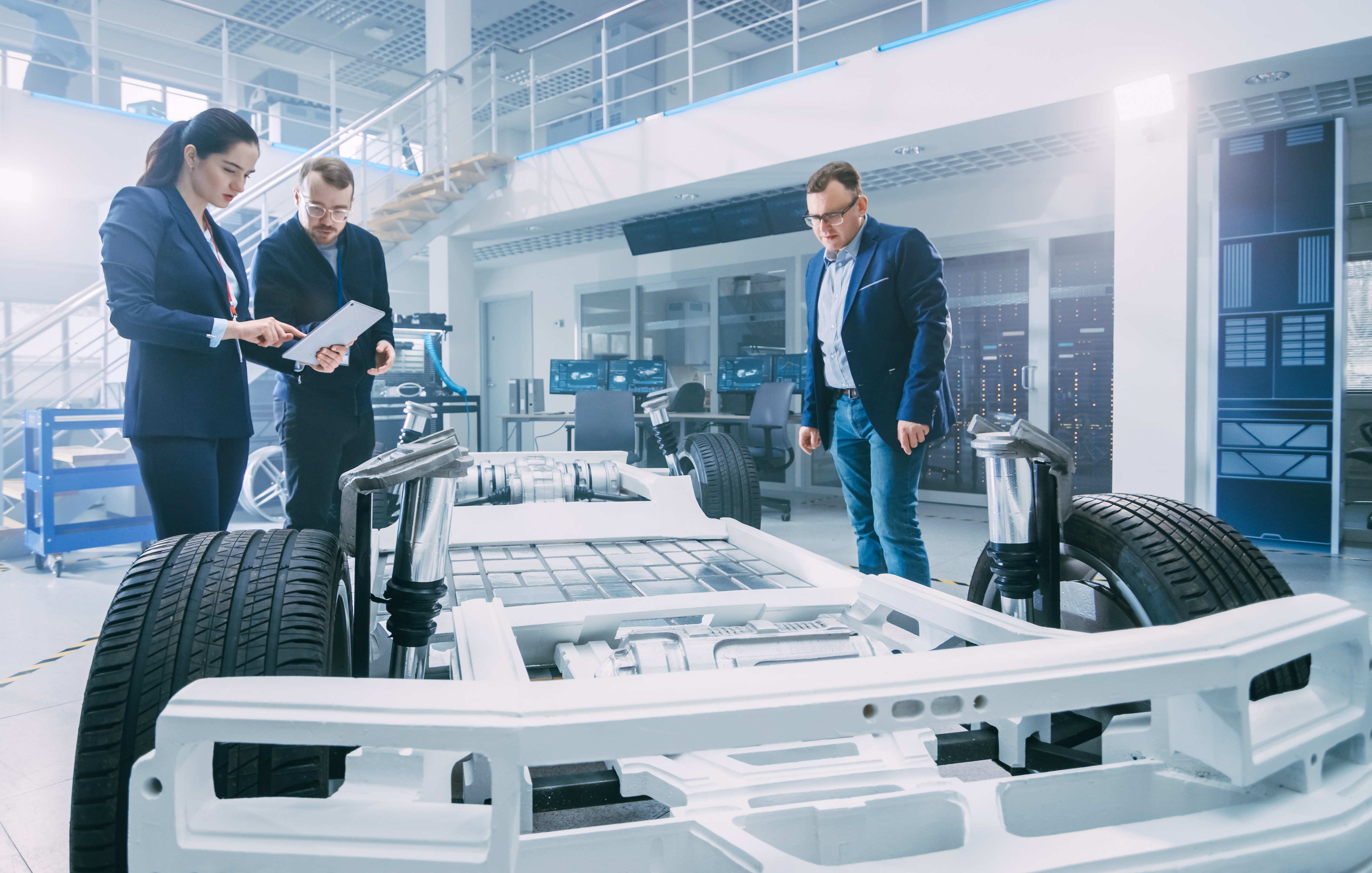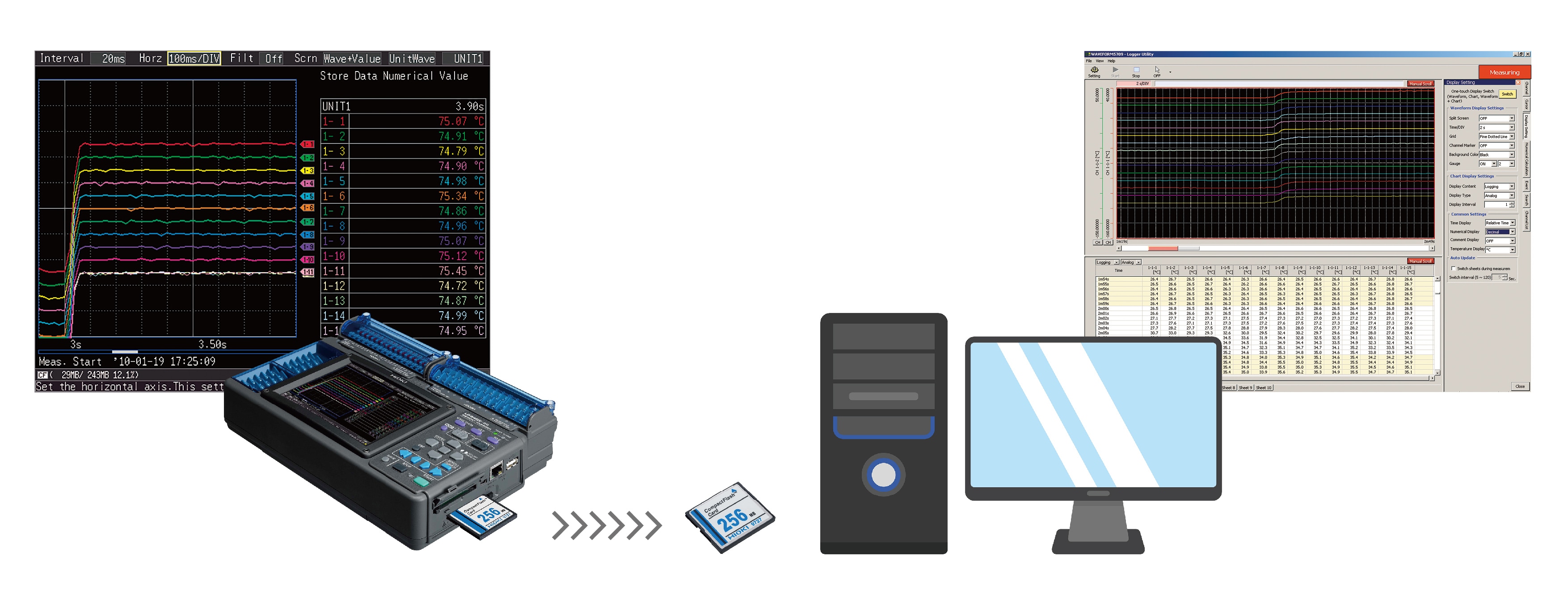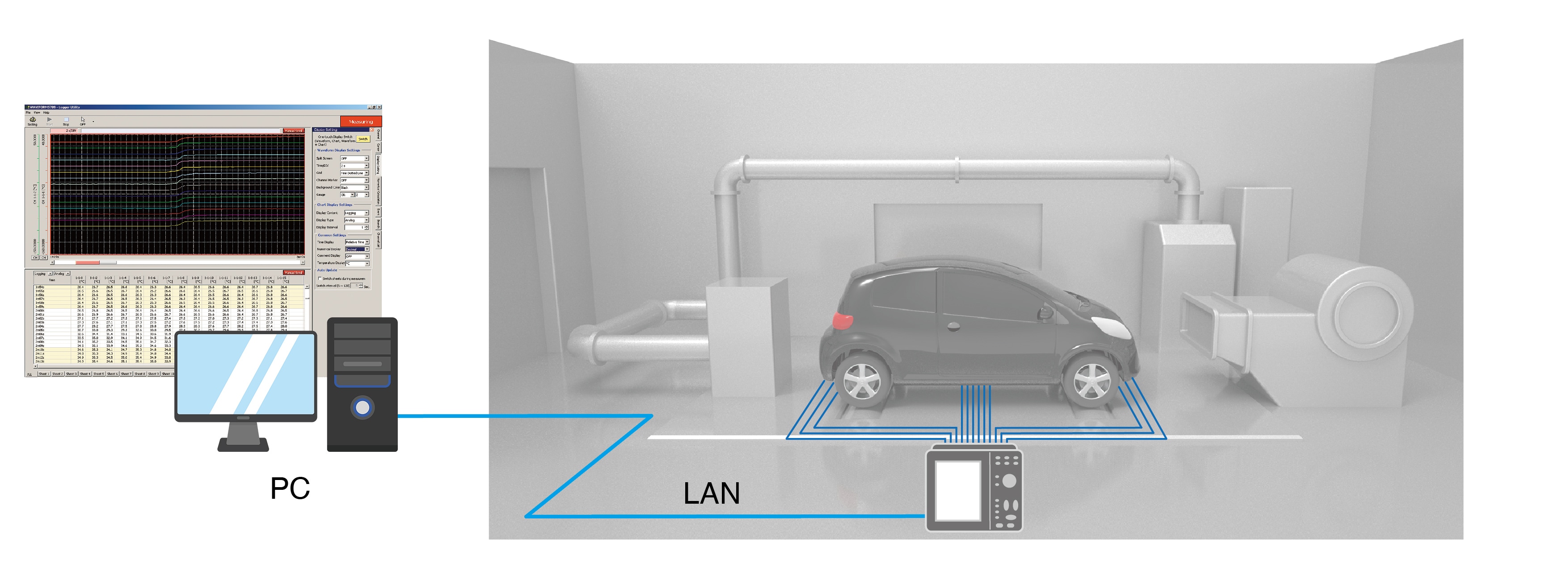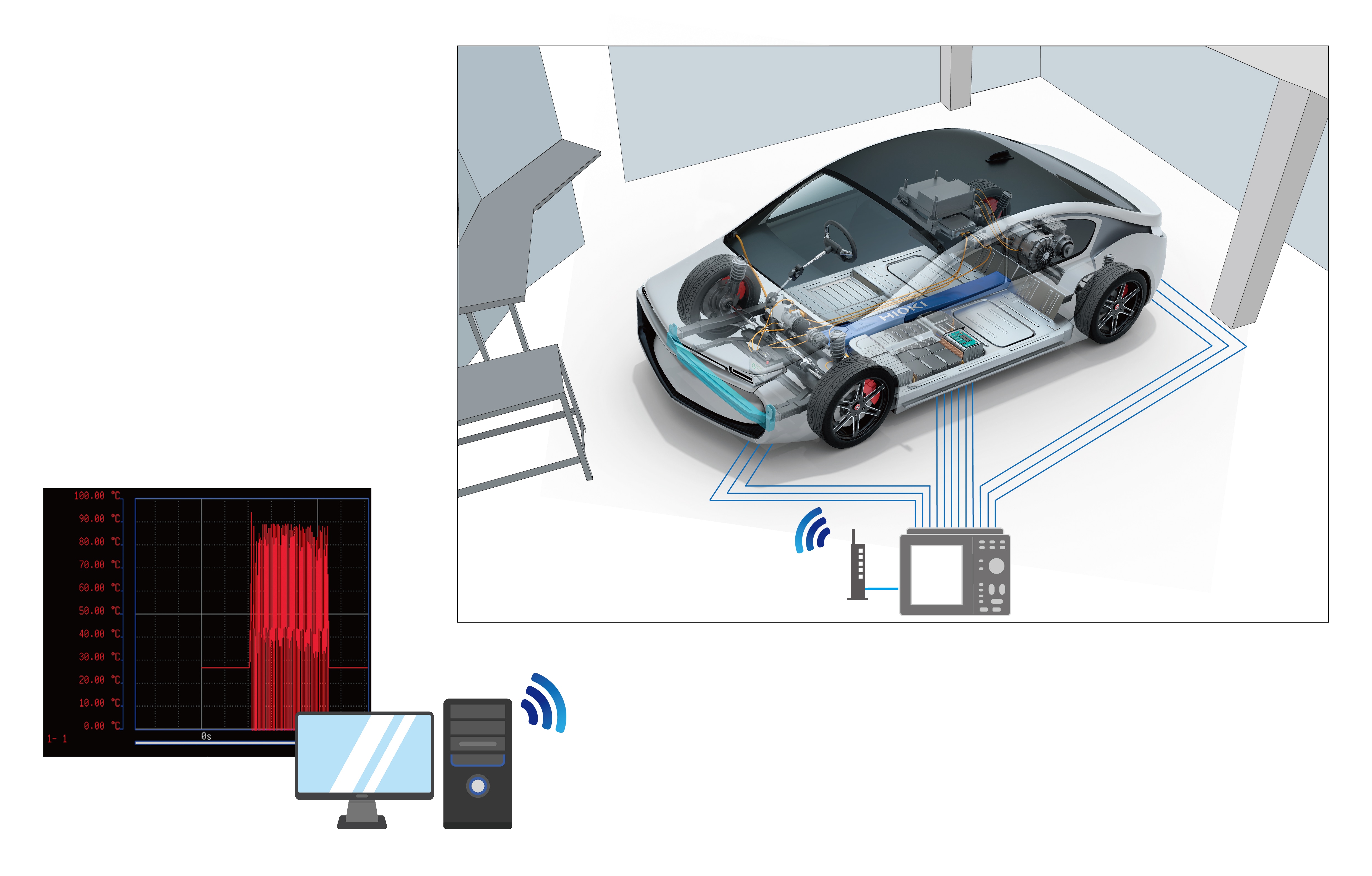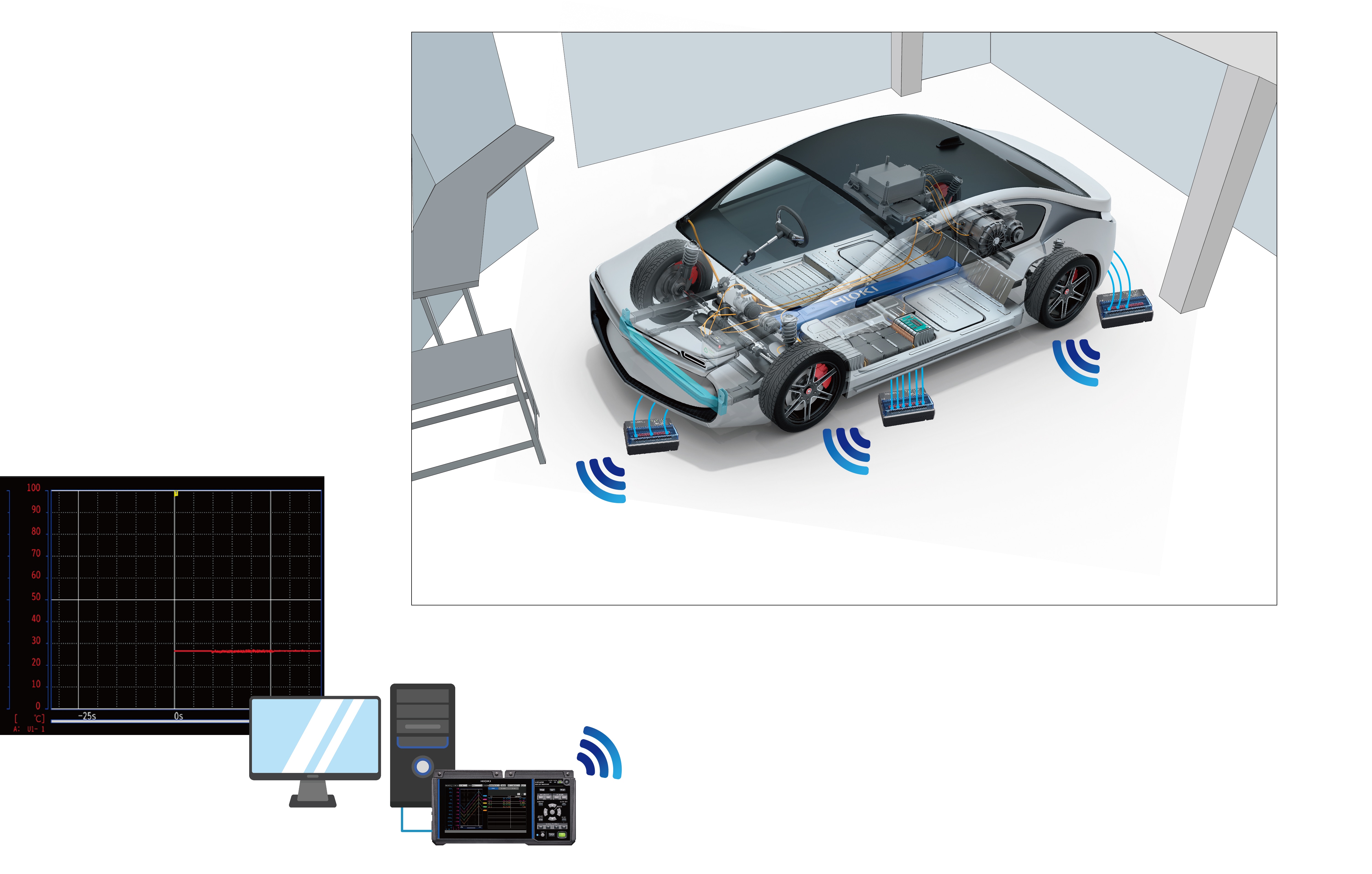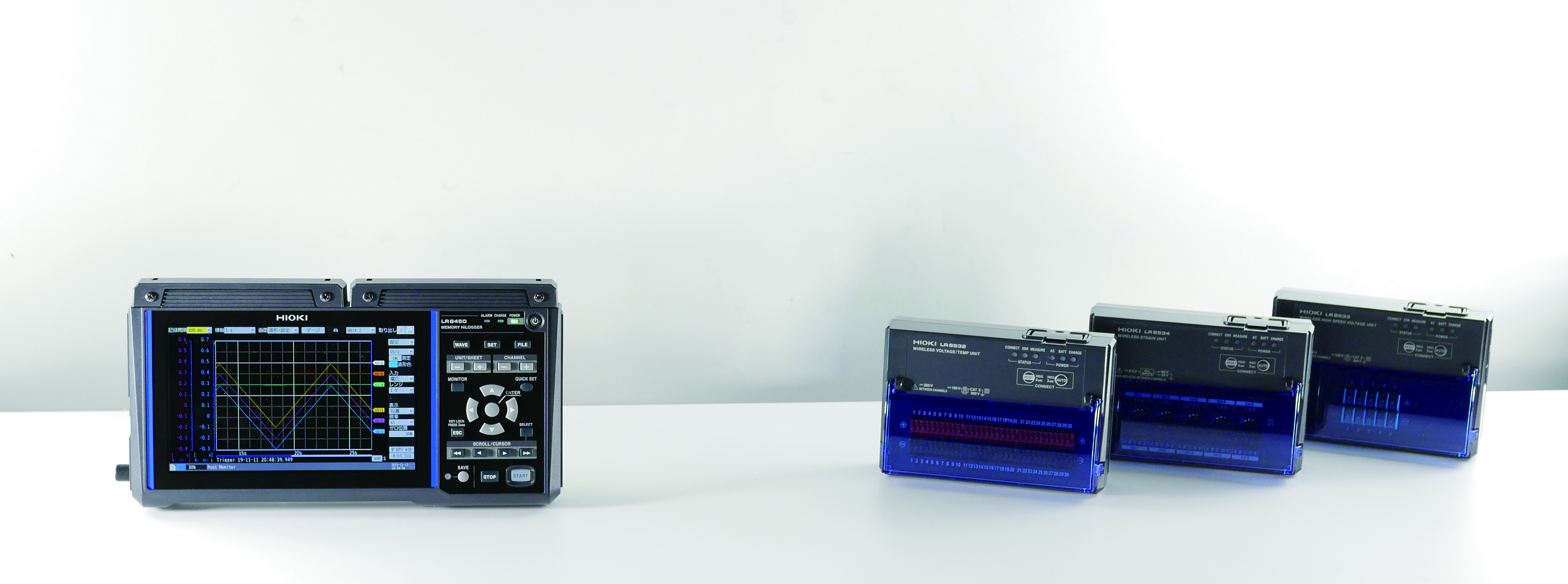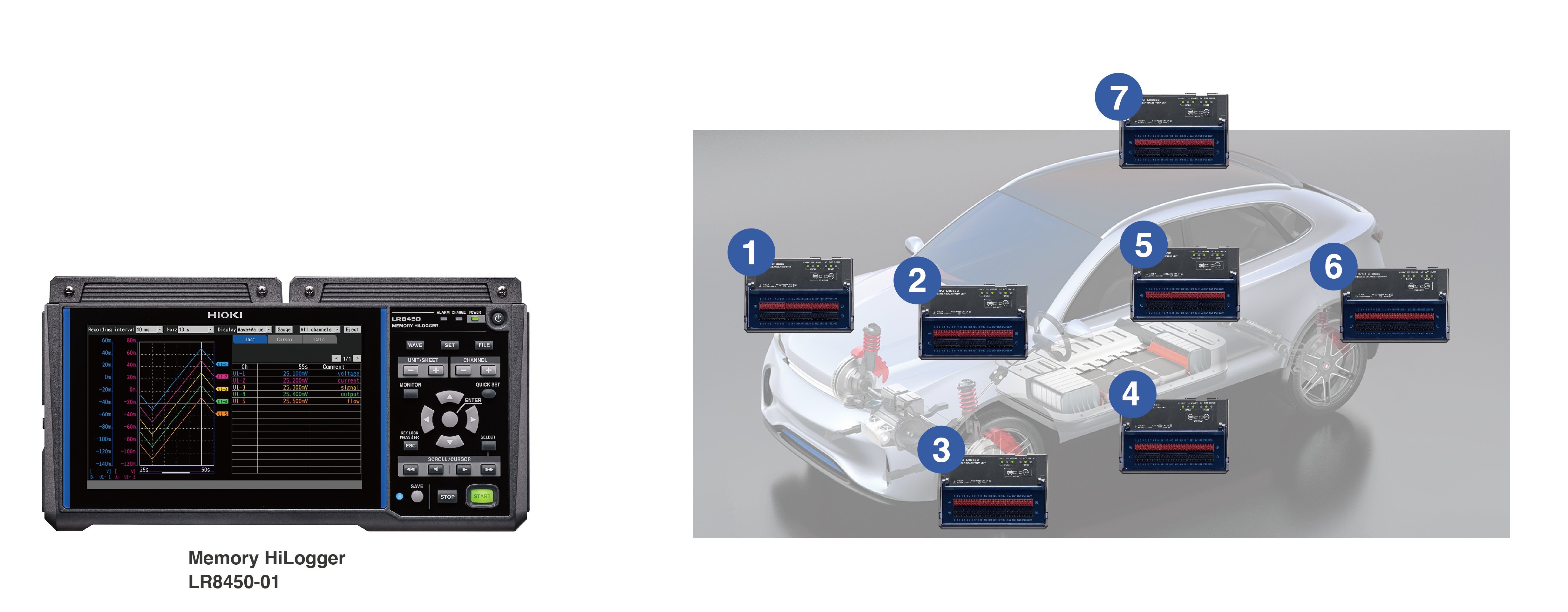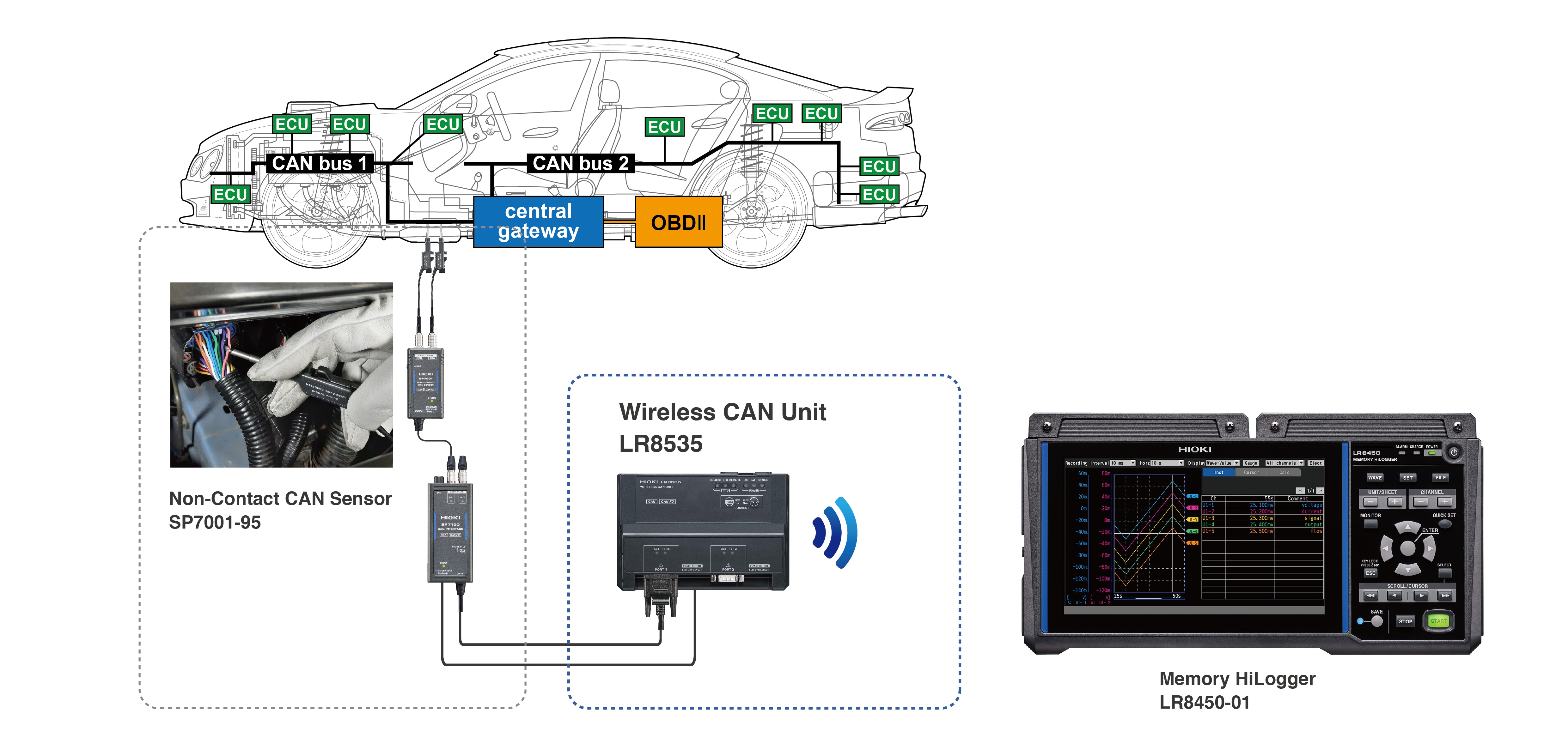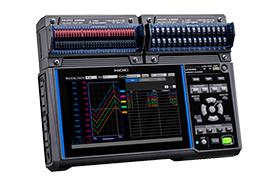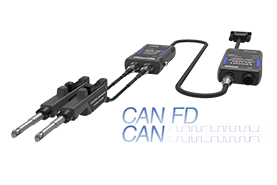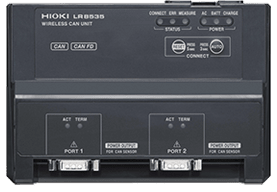Real-time verification of measurement data in a chassis dynamometer testing lab
Enabling real-time verification of measurement data in a chassis dynamometer testing lab
Dramatically shortening the testing process by eliminating wiring work
Featured customer
As a large manufacturer that has helped drive motorization in Japan over many years, Company X has developed and sold a variety of vehicles that play a key role in peoples’ lives. The company began addressing environmental concerns early on, and it continues to work to develop more environmentally vehicles.
Background
Establishing wireless connections between the instruments in a chassis dynamometer testing lab and its control room
Automakers and some part manufacturers use chassis dynamometers to perform emissions and environmental testing on light and medium-size automobiles. The test vehicle is placed on a chassis dynamometer in an indoor testing lab so that various evaluations can be carried out under conditions that approach those of actual driving.
Governments have been strengthening environmental regulations in recent years. Awareness of durability and safety has also been rising, and the amount of driving data that automakers need to amass before they can announce that a vehicle is problem-free has been growing. The number of parameters that must be tested has increased, whether companies are conducting driving tests in-house or outsourcing them to a specialized third-party service provider.
As a major Japanese automaker, Company X operates multiple testing labs where it uses chassis dynamometers to carry out the necessary testing. In recent years, such tests are monitored from a nearby manned control room so that conditions of intense cold and heat can be created in the sealed testing lab in anticipation of the various locations worldwide where vehicles will be used. As a result, technicians are unable to check measurement data in real time but must rather retrieve data stored on instruments after each test has ended. Occasionally, a test must be repeated when an error is found while reviewing data.
Connecting instruments inside a testing lab to the control room, for example via LAN cables, is one way to facilitate real-time review of measurement data. However, Company X’s existing wire ducts had no extra space due to growth in the number of parameters being measured, making it impossible to add new wire runs. Drilling new holes in the testing lab walls to accommodate LAN cables would have entailed significant construction costs.
As a result, the company decided to explore whether instruments in the testing lab could be connected wirelessly to the control room so that personnel could review measurement data in real time without installing new wires.
Key considerations that led the customer to choose Hioki
Real-time transfer of data between instruments and measurement modules
As it studied various connection methods, one key requirement identified by Company X was the ability to establish wireless connections between the testing lab and control room such that measurement data could be transferred in real time without use of external equipment. Even when instruments were added to accommodate new testing parameters, use of wireless technology would allow the company to accommodate such needs quickly and flexibly, without undertaking new construction.
The testing lab includes insolation equipment, IH devices for heating the road surface, and other hardware in order to create conditions that imitate the actual natural environment, and the company was concerned that the high frequencies produced by such equipment would introduce noise to measurement data. As a result, it also identified high noise resistance and high reliability as key requirements.
Moreover, the company realized that the need to establish wireless links between instruments and measurement modules was even more important than such links between instruments and control room computers due to the need to shorten input wiring and avoid noise.
Furthermore, Company X was planning to conduct driving tests at temperatures ranging from -15°C to 50°C. Another key criterion in the selection process was therefore the ability for the instruments and measurement modules installed in the testing lab to perform measurements continuously without being affected by this special environment.
After soliciting, comparing, and studying proposals from multiple companies, Company X ultimately chose Hioki’s Memory HiLogger LR8450-01 (wireless model). One key consideration was the broad temperature range in which the instrument and measurement modules can operate (-20°C to 55°C). Another was the ability to install measurement modules close to measurement targets and thereby avoid noise in input wiring and the ability to review measurement data in real time from the control room.
Benefits
Real-time review of measurement data and a faster testing process due to the elimination of wiring work
By deploying the LR8450-01, Company X realized wireless connections between the instrument and measurement modules while maintaining the sealed integrity of the testing lab and avoiding major construction. Personnel gained the ability to review measurement data in real time from the nearby control room. Thanks to this approach, the company reports that there is no longer any need to repeat tests due to the discovery of errors during post-testing review of data.
Until now, the company had to install and wire multiple instruments when conducting driving tests using a chassis dynamometer. Due to the need to use an enormous number of cables, even a small amount of movement would cause wires to break, and the challenge of finding which locations needed to be reconnected was emblematic of the high level of difficulty of such work. Wiring work alone sometimes took one or two days. By deploying the LR8450-01, the company has eliminated the need for such work and significantly accelerated the testing process.
Each LR8450-01 can connect to up to seven wireless modules. Company X uses seven wireless modules to simultaneously collect temperature and voltage data from locations around the vehicle. Since there are many measurement points near the battery in electric vehicles (EVs), the company is able to take advantage of the instrument’s large number of channels.
Six months has passed since the purchase, and the company continues to carry out tests using the LR8450-01 with peace of mind, free of problems. It is even considering purchasing additional instruments to facilitate an expansion in its testing lab. Hioki is planning to release a new measurement module that supports CAN signals in the near future, and Company X is considering purchasing that product so that it can acquire CAN data at the same time.

